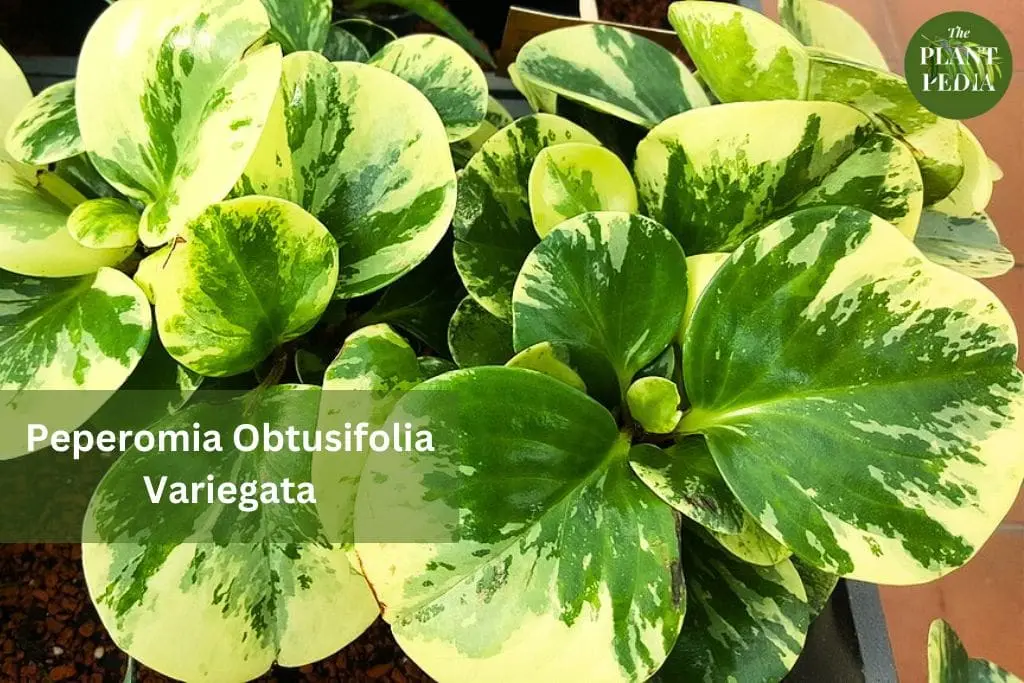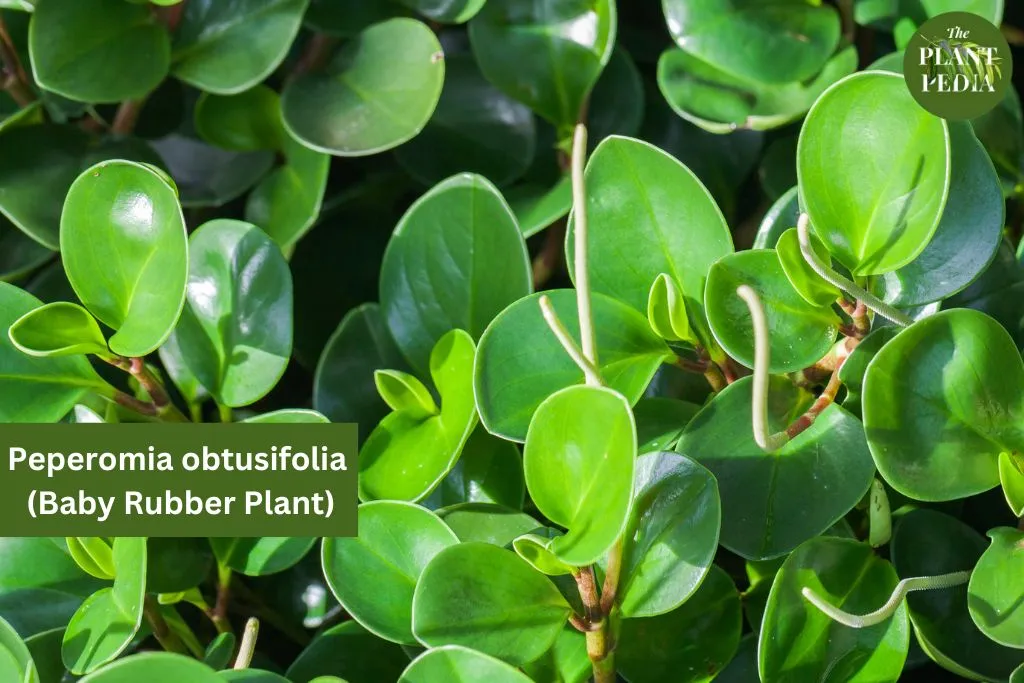Indoor plants have experienced a resurgence in popularity as people seek to bring a touch of nature into their homes and offices.
One such popular choice is the baby rubber plant (Peperomia obtusifolia). With its attractive foliage and easy care requirements, it has become a favorite among both novice and experienced plant enthusiasts.
However, ensuring the optimal growth and well-being of your baby rubber plant hinges on understanding its light requirements.
In this comprehensive guide, we will delve into the intricate details of baby rubber plant light requirements.
We will explore the plant’s natural habitat, its specific light needs, potential light-related issues, and tips for providing adequate light for a thriving plant.
Table of Contents
Understanding the Baby Rubber Plant
Before delving into the specifics of its light requirements, it’s essential to understand the baby rubber plant itself.
Native to South America, the Peperomia obtusifolia belongs to the Piperaceae family. Its common names include baby rubber plant, pepper face plant, and blunt-leaved peperomia.
The plant is characterized by its thick, glossy leaves that are often mistaken for rubber due to their texture.
In its natural habitat, the baby rubber plant thrives under the canopy of larger trees, receiving filtered or dappled sunlight.
This natural environment provides valuable insights into the type of light the plant requires to grow and flourish.

Read: Peperomia Obtusifolia Variegata: Everything About This Beauty.

Baby Rubber Plant Light Requirements
Light is a fundamental factor in a plant’s growth and overall health. For the baby rubber plant, finding the right balance of light is crucial.
Here’s what you need to know about its light requirements:
1. Indirect Light
Baby rubber plants are not adapted to receive intense, direct sunlight. In their native habitats, they thrive in the gentle, filtered sunlight that passes through the canopy of trees.
Mimicking these conditions in an indoor setting is vital. Indirect light is the key to preventing sunburn and scorching of the plant’s leaves.
Place your baby rubber plant near a window with sheer curtains or provide it with bright but filtered light.
North or east-facing windows are usually the best choices, as they offer moderate sunlight without the harsh intensity of afternoon rays.
2. Bright to Medium Light
While the baby rubber plant prefers indirect light, it still requires a certain level of brightness to support its growth and maintain its vibrant foliage.
Aim for bright to medium light conditions, which provide sufficient energy for photosynthesis while avoiding the risk of leaf damage.
If you notice the leaves of your baby rubber plant stretching or leaning towards a light source, it’s a sign that the light might be inadequate.
In such cases, consider adjusting the placement of the plant to a spot with slightly brighter light.
3. Avoid Direct Sunlight
Direct sunlight can be detrimental to the health of your baby rubber plant. The intense rays of the sun can lead to scorched leaves, causing irreversible damage.
If you place your plant in a spot with direct sunlight, you might notice brown patches or yellowing leaves.
To prevent this, always shield your baby rubber plant from direct sunlight. If your home receives strong afternoon sunlight, consider using sheer curtains or moving the plant further away from the window.
4. Artificial Light
If your living space lacks access to natural light, you can still successfully grow a baby rubber plant using artificial light sources.
LED grow lights are an excellent option as they can be tailored to emit the specific spectrum of light that plants need for photosynthesis.
When using artificial light, aim to replicate the conditions of indirect natural light. Position the grow light about 12 to 18 inches above the plant and adjust the duration of light exposure to mimic the plant’s natural day-night cycle.
Potential Light-Related Issues
Understanding the baby rubber plant’s light requirements also involves being aware of potential issues that can arise due to improper lighting:
1. Leaf Discoloration
One of the most noticeable signs of light-related issues is leaf discoloration. If your baby rubber plant is receiving too much light, you might observe bleached or pale leaves.
On the other hand, insufficient light can lead to dark green leaves with reduced variegation or even yellowing.
Regularly inspect your plant’s leaves for any unusual changes in color. Adjust the lighting conditions accordingly to prevent further damage.
2. Leggy Growth
Insufficient light can cause your baby rubber plant to exhibit leggy growth, characterized by elongated stems and widely spaced leaves.
The plant stretches towards the light source in an attempt to capture more energy for photosynthesis.
While some degree of stretching is natural, excessive legginess can make the plant appear less attractive and robust.
If you notice your baby rubber plant becoming leggy, consider relocating it to a brighter spot or supplementing with artificial light.
3. Slow Growth and Stunted Development
Inadequate light can lead to slow growth and stunted development in your baby rubber plant.
Insufficient energy from light hampers the plant’s ability to carry out essential metabolic processes, which can result in diminished overall health.
If you find that your plant’s growth has stalled or it isn’t producing new leaves, it’s a clear indication that the current light conditions are insufficient.
Evaluate the lighting situation and make the necessary adjustments.
Read: Peperomia Obtusifolia Flower: Exploring the Enigmatic Beauty.
Tips for Providing Adequate Light
Ensuring the optimal light conditions for your baby rubber plant might require some experimentation and adjustments.
Here are some tips to help you provide the right light for a thriving plant:
1. Observe Light Patterns
Observing the light patterns in your living space is the first step towards determining the optimal location for your baby rubber plant. Different areas of your home receive varying levels of light throughout the day.
Take note of which spots receive direct sunlight, which are shaded, and where bright, indirect light filters through.
For instance, a north-facing window typically offers consistent, gentle light that’s ideal for the baby rubber plant’s requirements. East-facing windows also provide morning sunlight without the intense heat of the afternoon sun.
By identifying these spots, you can choose a location that mimics the plant’s natural habitat conditions.
2. Rotate the Plant
As your baby rubber plant grows, it’s important to ensure balanced growth on all sides. This is where regular plant rotation comes into play.
The plant’s natural response to light is to grow towards it. Over time, this can lead to uneven growth, with one side of the plant becoming more compact and the other side stretching towards the light source.
To promote symmetrical growth, rotate your baby rubber plant by a quarter turn every two to four weeks.
This practice ensures that all sides of the plant receive their fair share of light exposure, preventing lopsided growth and maintaining a well-proportioned appearance.
3. Monitor Leaf Health
The leaves of your baby rubber plant serve as indicators of its overall health and how well it’s responding to its light conditions. Regularly monitor the leaves for any changes in color, texture, or pattern.
Healthy leaves should exhibit the vibrant green color that’s characteristic of the species, along with the glossy texture that gives the plant its nickname, “baby rubber plant.”
If you notice any signs of discoloration, such as yellowing, browning, or pale spots, it’s a sign that the plant might not be receiving the right amount of light.
Adjust the plant’s location accordingly, moving it closer to or further away from the light source as needed.
4. Gradual Acclimatization
Transitions from one lighting condition to another can be stressful for your baby rubber plant. If you’re moving it from a location with lower light levels to a spot with brighter light, or vice versa, it’s crucial to allow for a gradual acclimatization period.
Begin by placing the plant in its new location for just a few hours a day, gradually increasing the duration of exposure over the course of a week or two.
This slow acclimation helps the plant adapt to the change in light conditions without undergoing shock, which could lead to leaf drop or stunted growth.
5. Consider Seasonal Adjustments
The changing seasons bring about variations in natural light intensity and duration.
As winter approaches and sunlight becomes scarcer, you might need to make seasonal adjustments to your baby rubber plant’s lighting routine.
During the darker months, consider increasing the duration of artificial light exposure if needed.
Supplementing natural light with grow lights can ensure that your plant continues to receive the energy it needs for healthy growth.
Keep an eye on your plant’s response to the changing light conditions and make modifications as necessary.
My Personal Tips
Here are some personal tips for caring for your baby rubber plant’s light needs:
- If you are placing your plant in a south-facing window, be sure to rotate it regularly so that all sides of the plant receive equal amounts of light.
- Avoid placing your plant near heat vents or air conditioners, as these can dry out the leaves.
- Water your plant regularly, but be careful not to overwater it. The soil should be allowed to dry out slightly between waterings.
- Fertilize your plant every few months with a balanced fertilizer.
With proper care, your baby rubber plant will thrive and bring you years of enjoyment.
Related FAQs:
Can I Place My Baby Rubber Plant in Direct Sunlight?
No, placing your baby rubber plant in direct sunlight is not recommended. Baby rubber plants are native to forest floors where they receive filtered, dappled sunlight through the canopy.
Direct sunlight can cause the leaves to burn and scorch, leading to irreversible damage. Instead, opt for bright, indirect light near a north or east-facing window.
How Do I Know If My Baby Rubber Plant Is Getting the Right Amount of Light?
Monitoring your plant’s leaf health is a reliable way to gauge its light exposure. Healthy leaves should be a vibrant green with a glossy texture.
If the leaves are bleached, pale, or have dark spots, it could be a sign of incorrect light conditions. Adjust the plant’s placement to achieve the right balance of bright, indirect light.
Can I Use Artificial Light for My Baby Rubber Plant?
Yes, you can use artificial light to supplement or replicate natural light for your baby rubber plant.
LED grow lights are particularly effective, as they can be tailored to emit the spectrum of light that plants require for photosynthesis.
Position the light about 12 to 18 inches above the plant and provide it with 12 to 16 hours of light daily.
How Often Should I Rotate My Baby Rubber Plant?
Rotate your baby rubber plant every two to four weeks to ensure even growth on all sides.
This practice prevents the plant from leaning excessively towards the light source, promoting balanced development.
Quarter turns during each rotation session are sufficient to encourage symmetrical growth.
Can I Move My Baby Rubber Plant to Different Light Conditions Suddenly?
Sudden changes in light conditions can stress your baby rubber plant. When relocating the plant to a new spot with different lighting, it’s advisable to allow for gradual acclimatization.
Start by placing the plant in the new location for a few hours a day and gradually increase the duration over a week or two to prevent shock.
What Should I Do During Winter When Natural Light Is Limited?
During the darker months of winter, you might need to adjust your baby rubber plant’s lighting routine. Consider increasing the duration of artificial light exposure to compensate for reduced natural sunlight.
LED grow lights can be particularly helpful in maintaining the plant’s growth and vibrancy during this time.
Can I Keep My Baby Rubber Plant in Low-Light Conditions?
While baby rubber plants are adaptable, keeping them in consistently low-light conditions can lead to slow growth and leggy development.
It’s best to provide bright to medium light levels for optimal health. If you have limited natural light, supplement with artificial light to ensure the plant receives the energy it needs.
Why Are the Leaves of My Baby Rubber Plant Turning Yellow?
Yellowing leaves can be a sign of various issues, including improper light conditions. If your baby rubber plant’s leaves are turning yellow, it might not be receiving enough light.
Ensure the plant is placed in a spot with bright, indirect light, and monitor its response. If the yellowing persists, check for other potential factors like overwatering or nutrient deficiencies.
Can I Use Normal Indoor Lighting for My Baby Rubber Plant?
Normal indoor lighting might not provide the intensity and spectrum of light that your baby rubber plant needs for optimal growth.
While the plant can tolerate lower light levels, it’s recommended to prioritize bright, indirect light. If your indoor lighting is insufficient, consider using artificial grow lights to supplement the plant’s light requirements.
What’s the Ideal Distance Between My Baby Rubber Plant and a Grow Light?
When using grow lights, position them about 12 to 18 inches above your baby rubber plant.
This distance ensures that the plant receives sufficient light without being subjected to intense heat that can cause damage.
Adjust the height of the grow light as your plant grows to maintain the appropriate distance.
Conclusion
The baby rubber plant’s light requirements are a crucial factor in its overall health and appearance.
By understanding its natural habitat, mimicking its preferred light conditions, and remaining attentive to any signs of light-related stress, you can cultivate a beautiful and thriving baby rubber plant in your indoor space.
Remember that each plant is unique, and it might take some trial and error to find the perfect light balance, but the rewards of a lush and vibrant plant are well worth the effort.
If you have any further questions feel free to ask in the comment section below.

